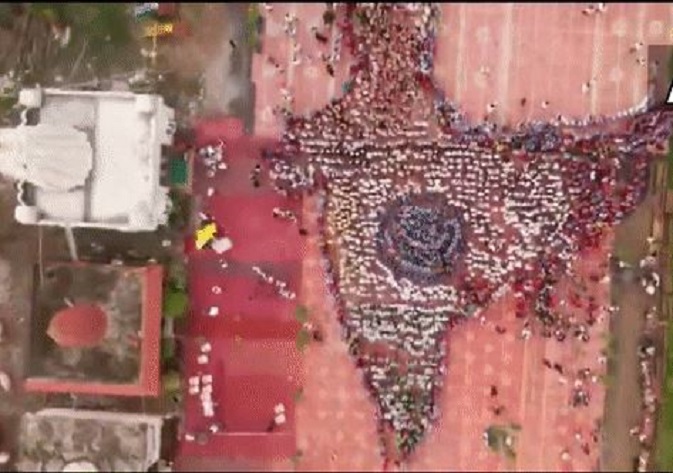
Indore: Indore on Saturday witnessed a new world record for making a geographical map of India through a human chain. The event got registered in the World Book of Record as it observed the largest human chain forming the country's map to commemorate Azadi Ka Amrit Mahotsav marking 75 years of Independence of the country.
The event was organised by a social institution 'Jwala' at Divya Shaktipeeth and more than 5000 school students, social workers and other people came together to form the map. Dr. Divya Gupta, founder of 'Jwala' said that through this effort, an attempt will be made to create a new world record by breaking the world record for making human chain in geographical shape.
Read also: Man revamps car on theme of Har Ghar Tiranga by spending Rs 2 lakh; expresses desire to meet PM Modi
"We had made a human chain on the map of India, and not only on the border but also inside it. Earlier, a human chain was formed on the boundary line of the country's map, but we gathered people inside by making tricolor and blue Ashok Chakra in the middle. Total 5,335 people participated in this event," she further said.
"Shri Shakti was made on the boundary of the map of India to show the importance and strength of the women of the country," she added. On August 15, India will be celebrating the 75th year of its independence and many events and initiatives are being conducted to commemorate the day.
Read also: BJP writes to SC Commission for action against teacher accused of killing Dalit student in Rajasthan
Azadi Ka Amrit Mahotsav (AKAM) is being observed by the Central government and the Indian populace to mark the country's 75th anniversary of independence with an enthusiasm to bring the Tiranga home and be a part of the 'Har Ghar Tiranga' campaign.
The official journey of Azadi Ka Amrit Mahotsav commenced on March 12, 2021, which started a 75-week countdown to our 75th anniversary of independence. The programme envisages inspiring Indians everywhere to hoist the national flag at their homes. The aim of the programme is to make the relationship with the national flag a more personal one rather than just keeping it formal or institutional. (ANI)







